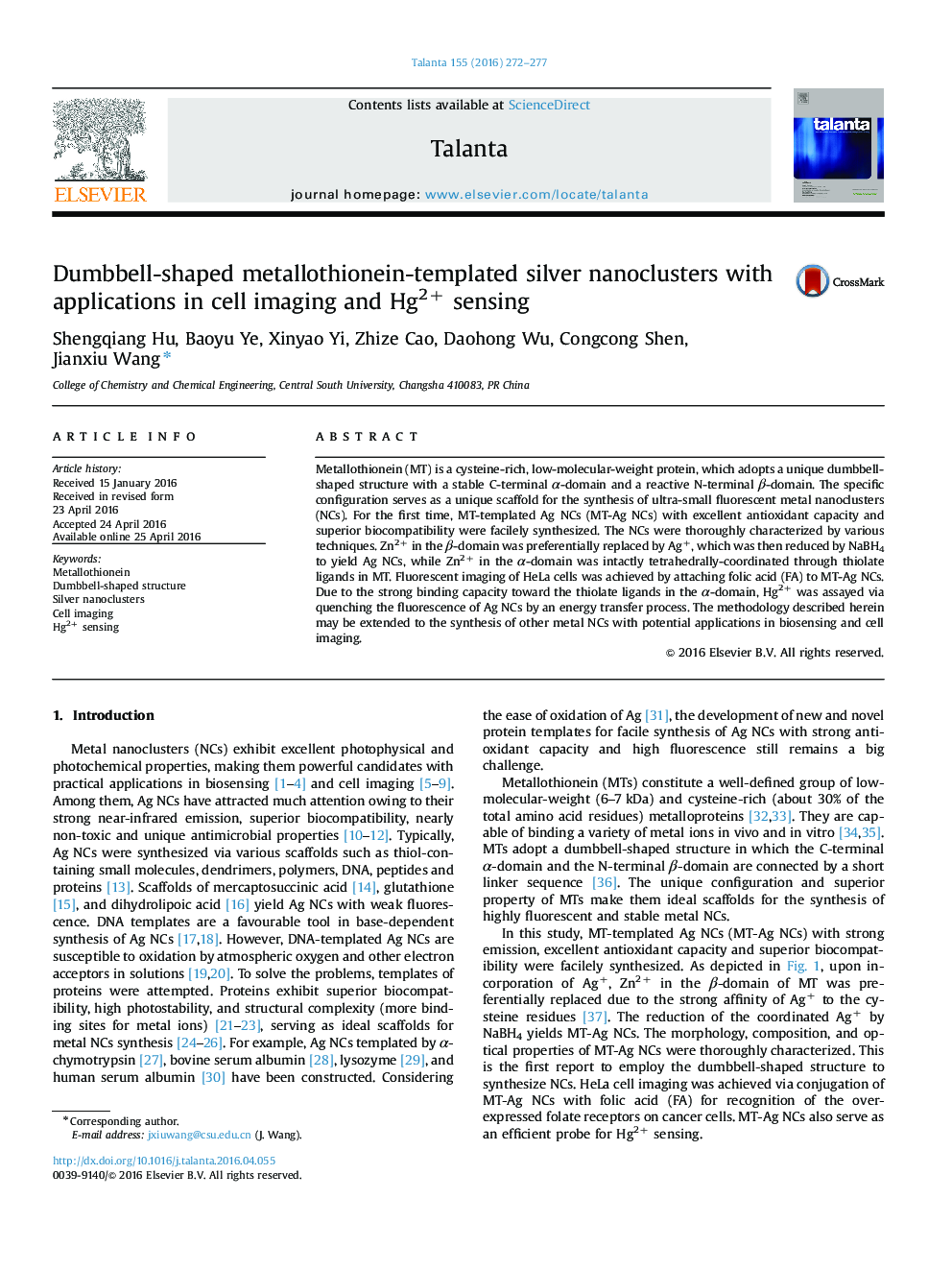| Article ID | Journal | Published Year | Pages | File Type |
|---|---|---|---|---|
| 1242441 | Talanta | 2016 | 6 Pages |
•MTs serve as an ideal scaffold for the synthesis of Ag NCs.•The NCs exhibit excellent antioxidant capacity and superior biocompatibility.•Cell imaging and Hg2+ sensing were achieved.•The mechanism for Hg2+ assay involves the energy transfer process.
Metallothionein (MT) is a cysteine-rich, low-molecular-weight protein, which adopts a unique dumbbell-shaped structure with a stable C-terminal α-domain and a reactive N-terminal β-domain. The specific configuration serves as a unique scaffold for the synthesis of ultra-small fluorescent metal nanoclusters (NCs). For the first time, MT-templated Ag NCs (MT-Ag NCs) with excellent antioxidant capacity and superior biocompatibility were facilely synthesized. The NCs were thoroughly characterized by various techniques. Zn2+ in the β-domain was preferentially replaced by Ag+, which was then reduced by NaBH4 to yield Ag NCs, while Zn2+ in the α-domain was intactly tetrahedrally-coordinated through thiolate ligands in MT. Fluorescent imaging of HeLa cells was achieved by attaching folic acid (FA) to MT-Ag NCs. Due to the strong binding capacity toward the thiolate ligands in the α-domain, Hg2+ was assayed via quenching the fluorescence of Ag NCs by an energy transfer process. The methodology described herein may be extended to the synthesis of other metal NCs with potential applications in biosensing and cell imaging.
Graphical abstractFigure optionsDownload full-size imageDownload as PowerPoint slide
